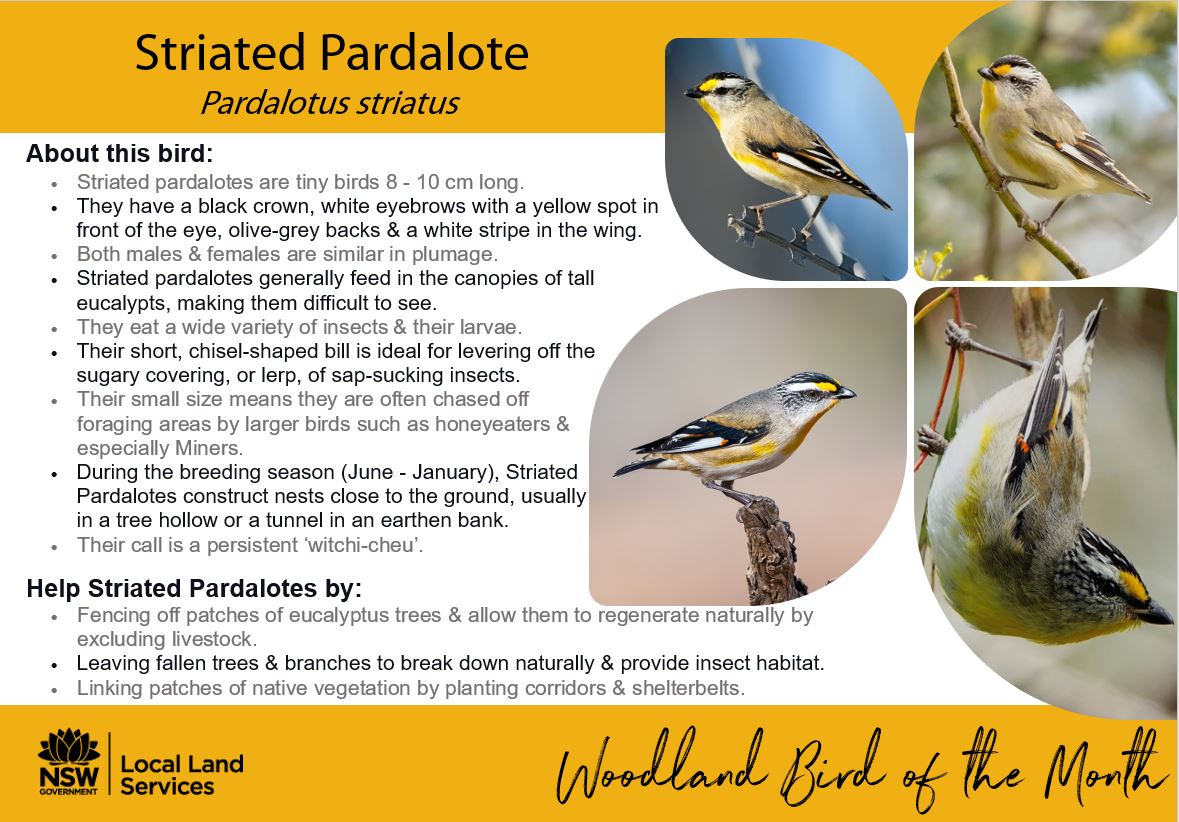Striated Pardalote, the little bird with the big voice
11 Mar 2022
PRODUCTION ADVICE / NRM NEWS - MARCH 2022 - ENVIRONMENT
The Striated Pardalote is more common than people usually think, with its call the first indication of the presence of this brightly coloured little bird. They are more often heard than seen, their call is surprisingly loud for such a small bird and is described as a persistent ‘witchi-cheu’.
The Striated Pardalote can be found throughout much of Australia, and across this range, there are numerous populations and subspecies. Despite being tiny birds, some populations undertake remarkable migratory movements, while others remain in the same area throughout the year. In some populations, some of the birds migrate while others stay behind. The movements of the Striated Pardalote are complex. The best-known migratory population breeds in Tasmania and makes regular seasonal movements across the Bass Strait, mixing with various mainland-breeding populations.
Striated Pardalotes inhabit eucalypt forests and woodlands. Clearing natural habitat across south-eastern Australia has resulted in the loss of millions of natural hollows that Striated Pardalotes use as nesting sites.
DID YOU KNOW?
- The Striated Pardalote is a good indicator species for healthy native remnant woodland in agricultural areas.
- The diversity of woodland dependent hollow-nesting birds increases by 20% for every ten large trees present.
- Insectivorous birds eat 60% of insects found in woodland forests.
- Striated Pardalotes particularly love feeding on lerps, which otherwise reduce the vigour and growth of eucalypts.
Find out more about Striated Pardalotes here.
Clockwise from top left 📸 thanks to:
- Keith Fisher 2021 birdlifephotography.org.au,
- Diana Womersley 2019 birdlifephotography.org.au,
- Rodger Scott 2021 birdlifephotography.org.au, and
- Gunther Frensch 2020 birdlifephotography.org.au.
